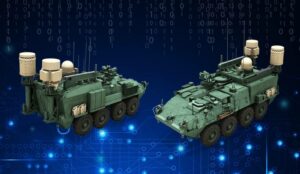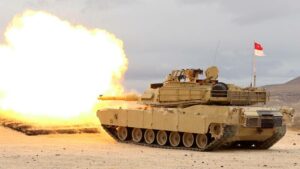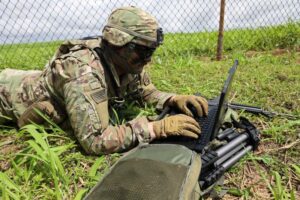
The United States is in a “decisive decade” as it seeks to deter an aggressive China. Yet, an internal challenge stands in the way of achieving this objective: The U.S. has an innovation adoption problem.
While, the private sector develops new technologies at a rapid pace, the Pentagon’s process for doing the same is dated and cumbersome. This prevents our military from having the best technology when facing a competitor such as China. This must change.
Calls for acquisition reform are nothing new. In fact, it has been on the agenda of government officials for decades since the Goldwater-Nichols Act of 1986. Indeed, promising steps have been taken to accelerate innovation, including the establishment of organizations like the Defense Innovation Unit and the Office of Strategic Capital. However, systemic barriers to innovation persist within the military’s acquisition system that prevent the adoption of emerging technology needed to deter and win in future conflicts.
For our part and to address this pressing challenge, we at the Atlantic Council launched a landmark Commission on Defense Innovation Adoption last year to tackle this challenge. After months of deliberation and 65-plus stakeholder interviews, we released our “Interim Report” this month, which provides 10 actionable steps that can be taken by Congress and the Department of Defense today to address these challenges.
The commission reiterates that the U.S. does not have an innovation problem, but an innovation adoption problem. The Pentagon is rigidly bound by lengthy budget cycles and bureaucratic hurdles. The commission found that, apart from regulatory barriers, a lack of consistency around requirements was crushing startups seeking to work with the military, even ones with sizable research and development grants.
Even then, if a company is fortunate enough to be selected to fill a requirement, it faces a lengthy and confusing military procurement process.
Finally, the military’s budget, which is controlled by Congress, lacks flexibility to quickly adapt to changes to the threat environment. This results in the delivery of yesterday’s capabilities, tomorrow.
Fortunately, the 10 recommendations that the commission identified are able to be implemented promptly with little bureaucratic growth. For example, the military can better align its budget and program planning by empowering five program executive officers to move away from strictly individual program management to broader capability portfolio management. Under this new model, PEOs would be charged with delivering a specific capability category such as integrated logistics — not just a program for a single type of equipment or software.
Congress should in turn revert reprogramming authorities to historical norms so that acquisition officials can exercise greater flexibility in spending within the fiscal year, instead of requiring them to wait until the next budget cycle.
Our commission also recommends that the military provide Congress with more simplified and streamlined reporting on spending, including on reprogramming activities. This will allow Congress to continue to effectively conduct oversight while also offering the flexibility to acquisition professionals to adopt critical technology at the speed of relevance. Implementing this recommendation will also improve the speed of communication between the Pentagon and Congress, reinforcing a crucial element of any reform: trust.
Another recommendation — already in progress — is to improve the military’s demand signal of intent to purchase from the private sector. The commission’s “Interim Report” recommends that with a promotion of the Defense Innovation Unit to report to the deputy secretary of defense, the organization must also receive increased resources in both funding and military personnel billets to coordinate and streamline the demand signal, Pentagon-wide.
Additionally, elevating the Office of Strategic Capital alongside DIU would enable the kind of cross-coordination to both identify and resource promising, emerging technology.
Innovation is a defining characteristic and competitive advantage of the United States — both of the vaunted private sector as well as the rich history of the U.S. military. Yet increasingly, our men and women in uniform are going to war with technology that lags behind not only Russia and China, but their civilian peers. To ensure we turn away from this precipice, the country needs solutions that tackle barriers to technology adoption, defense acquisition reforms and efficiencies in how Congress budgets money to the Pentagon. This is exactly how the Commission on Defense Innovation Adoption’s “Interim Report” has organized its recommendations.
We are in the “decisive decade,” as the president’s National Security Strategy has called out. Implementing these reforms will ensure we prevail in an era of strategic competition.
Clementine G. Starling is the director of the Forward Defense program within the Scowcroft Center for Strategy and Security at the Atlantic Council think tank. Stephen Rodriguez is the director of the Atlantic Council’s Commission on Defense Innovation Adoption.
- SEO Powered Content & PR Distribution. Get Amplified Today.
- Platoblockchain. Web3 Metaverse Intelligence. Knowledge Amplified. Access Here.
- Minting the Future w Adryenn Ashley. Access Here.
- Source: https://www.defensenews.com/opinion/commentary/2023/04/17/how-to-accelerate-innovation-adoption-at-the-pentagon/
- :is
- 10
- 70
- a
- Able
- accelerate
- achieving
- acquisition
- Act
- activities
- adapt
- address
- adopt
- Adoption
- ADvantage
- After
- agenda
- alongside
- already
- and
- apart
- ARE
- around
- AS
- At
- Authorities
- barriers
- BE
- behind
- BEST
- Better
- between
- bound
- broader
- budget
- Budgets
- bureaucratic
- by
- called
- CAN
- capabilities
- capital
- Category
- Center
- challenge
- challenges
- change
- Changes
- characteristic
- charged
- China
- commission
- Communication
- company
- competition
- competitive
- competitor
- Conduct
- confusing
- Congress
- continue
- controlled
- Council
- country
- critical
- crucial
- cycle
- cycles
- dated
- decade
- decades
- Defense
- defining
- delivering
- delivery
- Demand
- Department
- department of defense
- deputy
- Development
- develops
- Director
- doing
- effectively
- efficiencies
- element
- elevating
- emerging
- Emerging Technology
- empowering
- enable
- enough
- ensure
- Environment
- equipment
- Era
- establishment
- Even
- exactly
- example
- executive
- Exercise
- faces
- facing
- fill
- Fiscal
- Flexibility
- For
- fortunate
- Forward
- found
- from
- funding
- future
- going
- Government
- Government Officials
- grants
- greater
- Growth
- Have
- having
- historical
- history
- How
- How To
- However
- HTTPS
- Hurdles
- identified
- identify
- images
- implemented
- implementing
- improve
- in
- Including
- increased
- increasingly
- individual
- Innovation
- instead
- integrated
- intent
- internal
- Interviews
- IT
- ITS
- jpg
- Kind
- Lack
- landmark
- Last
- Last Year
- launched
- like
- little
- logistics
- management
- Men
- Military
- model
- money
- months
- more
- move
- National
- national security
- needed
- needs
- New
- New technologies
- next
- objective
- of
- offering
- Office
- officers
- on
- organization
- organizations
- Organized
- Oversight
- Pace
- part
- pentagon
- Personnel
- planning
- plato
- Plato Data Intelligence
- PlatoData
- portfolio
- portfolio management
- prevent
- private
- private sector
- Problem
- process
- professionals
- Program
- Progress
- promising
- provide
- provides
- purchase
- quickly
- rapid
- receive
- Recommendation
- recommendations
- recommends
- reform
- regulatory
- relevance
- report
- Reporting
- requirement
- Requirements
- research
- research and development
- resource
- Resources
- Results
- revert
- Rich
- Russia
- s
- same
- secretary
- sector
- security
- seeking
- Seeks
- selected
- should
- Signal
- simplified
- since
- single
- sizable
- So
- Software
- Solutions
- specific
- speed
- Spending
- stakeholder
- stands
- States
- Stephen
- Steps
- Strategic
- Strategy
- streamlined
- such
- system
- systemic
- tank
- Technologies
- Technology
- that
- The
- their
- Them
- These
- think tank
- threat
- to
- today
- tomorrow
- Trust
- TURN
- u.s.
- under
- unit
- United
- United States
- wait
- war
- Way..
- WELL
- which
- while
- will
- win
- with
- within
- Women
- Work
- would
- year
- zephyrnet












